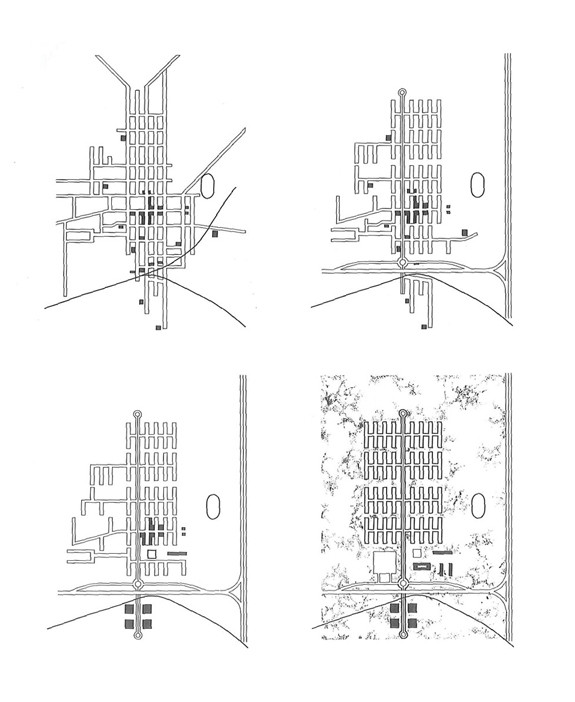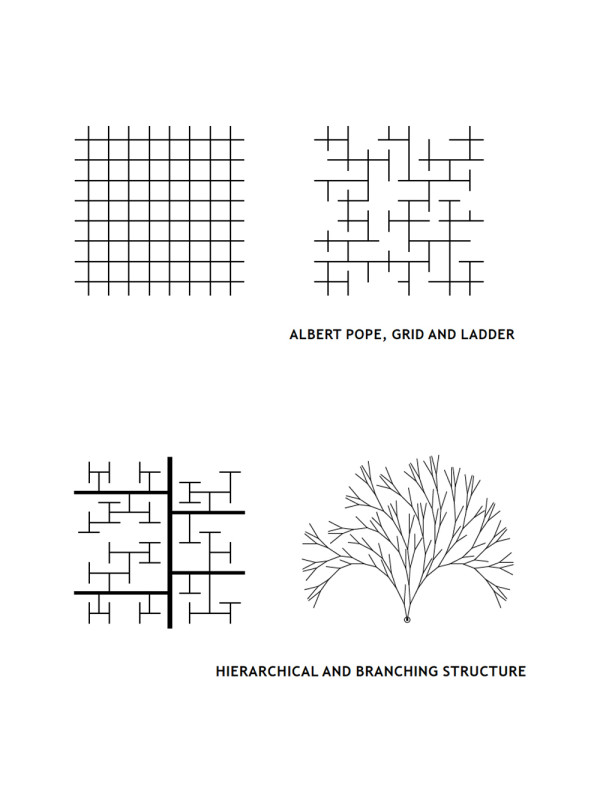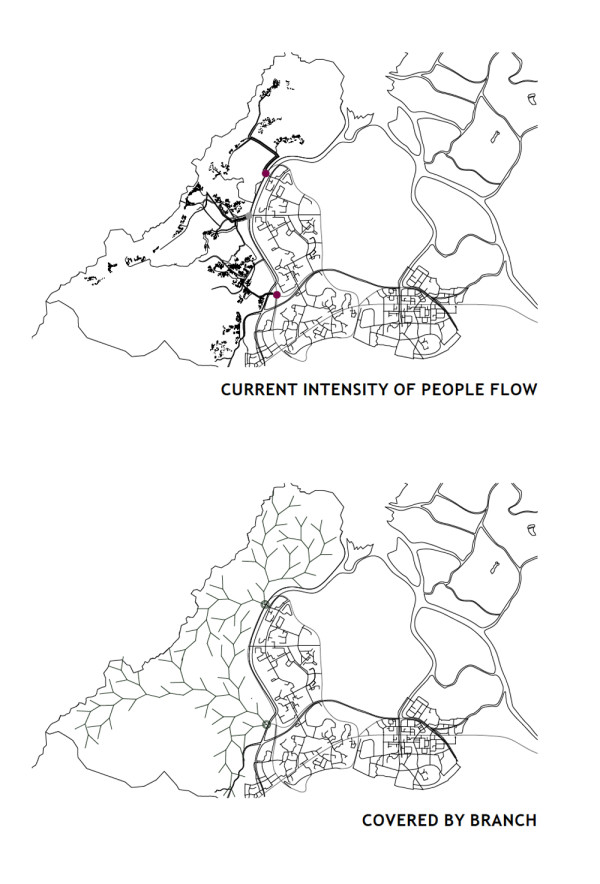
Ludwig Hilberseimer-Wisconsin Replan
According to Albert Pope in the book Ladders, the distinction between an open, centrifugal and a closed, centripetal organization is established by their respective spatial fields. The simple isolation of a grid fragment from the extensive field of centrifugal development produces a radical transformation of urban structure. As erosion interrupts the continuities of the urban grid, an exterior condition or spatial residuum is produced. And the spatial qualities are antithetical to those of open centrifugal urbanism.
Comparing the general continuous grid to a fragment of grid, the continuous grid functions as non-hierarchical networks open to diverse response and is capable of structuring complex association and accessibility. This kind of continuous grid is an open structure, and the open patterns of movement generated by the grid demonstrate these qualities. In contrast, the fragment of grid which has been eroded by the exterior environment represents a strong hierarchy within the structure itself, and the movement is limited by the inaccessibility of the structure. However, the space patterns in-between the structure is activated and diversified.
The example of approaching this hierarchical structure proposed by Ludwig Hilberseimer is to eliminate key streets and street intersections in order to transform the continuity of the open grid into a series of radically disassociated closed figures. With the elimination of each successive intersection, the community would apparently become independent. The significant amount of land saved by the semi-connected structure offers more possibility for nature preservation and the utilities of rural activities. And the isolated figures of the units adopt easily to conditions of topography.
Confronting to the presence of rural activities and the existing nature condition, some similar strategy needs to be implemented in the project. After analyzing the current intensity of people and product flow, the two transition nodes are highlighted as the primary issue, taking account of the starting point of network. The hierarchical structure is also transformed into the branching structure, so as to better address the node and direction alongside the structure itself. The space in-between each two branches could be manipulated in order to adapt the topographical condition and the nature preserve. The characteristics of semi-connection could also demonstrate the independent activities in rural lifestyle.
Instead of extending the centrifugal urban blocks to the sub-urban area, an alternative infrastructure-based branching structure could be introduced into the rural area. The branching structure will start from the transit nodes and then gradually spread to the deep land.

